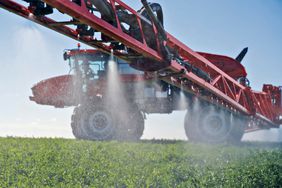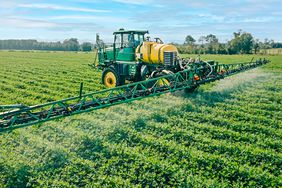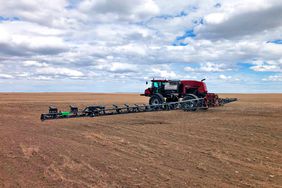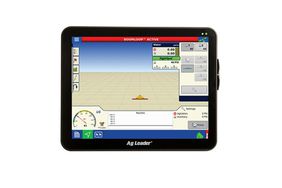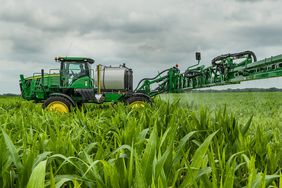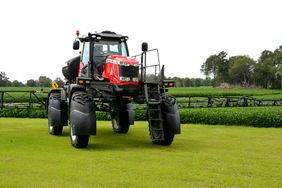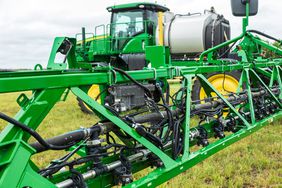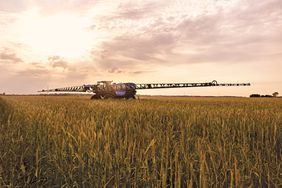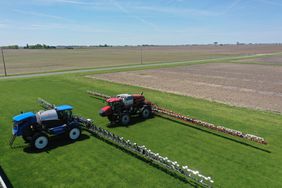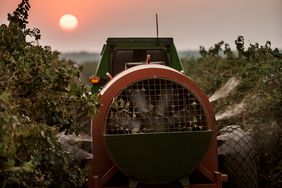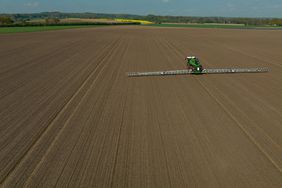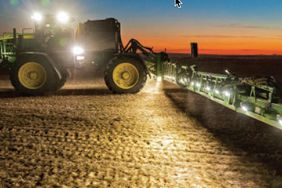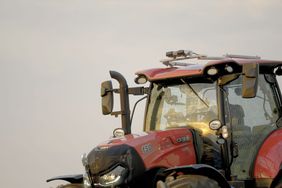:max_bytes(150000):strip_icc()/generic20spraying20by20gil-2000-2090f35dcdd146bc985c2636a227361f.jpg)
Some things about chemical drift are out of your control. They include wind speed, temperature, air inversions, and chemical volatilization.
Rather, says Travis Legleiter, University of Kentucky Extension weed specialist, if drift has you worried, concentrate on the things you can impact. They include:
- Droplet size
- Nozzle type
- Sprayer volume
- Sprayer pressure
- Boom height
All impact efficacy, and help keep chemicals on target.
Here's more detail on such factors.
Droplet size
"Droplets below 200 microns [twice the size of a human hair] are considered driftable fines," he says. If your chemical is a drift risk, you need to create spray droplets above 200 microns.
"Using a nozzle that produces spray droplets in the very coarse, extremely coarse, or ultra-coarse categories puts the majority of droplets above 200 microns. Approximately 10% or less of their spray volume is driftable fines," he says.
Nozzle type
Single-stage flat-fan nozzles are about the worst for creating a driftable spray pattern. They produce a wide range of droplet size, mostly influenced by pressure.
"Think of putting your thumb over the end of a garden hose, and you get the idea of the variation of spray pattern a single-stage nozzle produces," says Legleiter.
A two-stage nozzle is a step up. It has one orifice for metering the volume of spray, and a second exit orifice for creating the spray pattern. There's less pressure at exit and more control of droplet size. Drift is reduced.
The most complex nozzle combines this two-stage orifice with air induction to produce a more consistent droplet size, and a turbulence (turbo) chamber for further reducing pressure at the exit orifice. This gives a larger droplet with a low percentage of fines – under 1%. It's the best nozzle to minimize wind drift.
Sprayer volume
A lot of attention has been given to reducing spray volume for crop chemicals, and you might think that would reduce drift potential. But Legleiter says that with coarse droplets, low volume may not give good enough coverage on target weeds.
"We've compared 10 gallons per acre of spray volume with 15 gallons," he says of their work with the drift-reduction nozzles. Water-sensitive spray cards lying in the plots measured the coverage. Follow-up tests were conducted in real field trials at typical sprayer speeds (12 mph).
In both controlled plots and the real fields, 15 gallons per acre gave better coverage than 10 gallons. "And in some cases, 20 gallons might be better yet," Legleiter thinks.
These tests involved glyphosate with 2,4-D or dicamba. He concludes that with these systemic chemicals, drift reduction nozzles can provide equivalent efficacy as standard flat fan nozzles. But chemical mixes with a contact herbicide such as Liberty will add another level of complexity.
He offers two other reminders to growers to maintain efficacy while minimizing drift. First, apply chemicals to appropriately sized weeds, generally 4 inches or smaller. And postemergence herbicide programs usually work better when combined with a preemergence program to reduce weed density.
Q&A For Farmers
SF: What about the use of the new electrostatic sprayers to reduce off-target drift?
Legleiter: "I don't think that is the answer. They produce small droplets of 30 to 40 microns. There might be better potential with the pulse width modulation sprayers to produce coarse droplets with consistent pressure and reduce drift."
SF: What about hooded sprayers – do they help?
Legleiter: "Maybe. I know more people are looking at hoods in response to the recent spray drift issues. But if you have the spray boom at the 4-foot level and the hood covers 18 inches or 24 inches, then hoods don't do much more to reduce drift."
